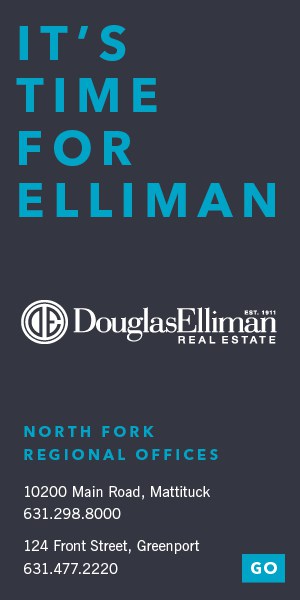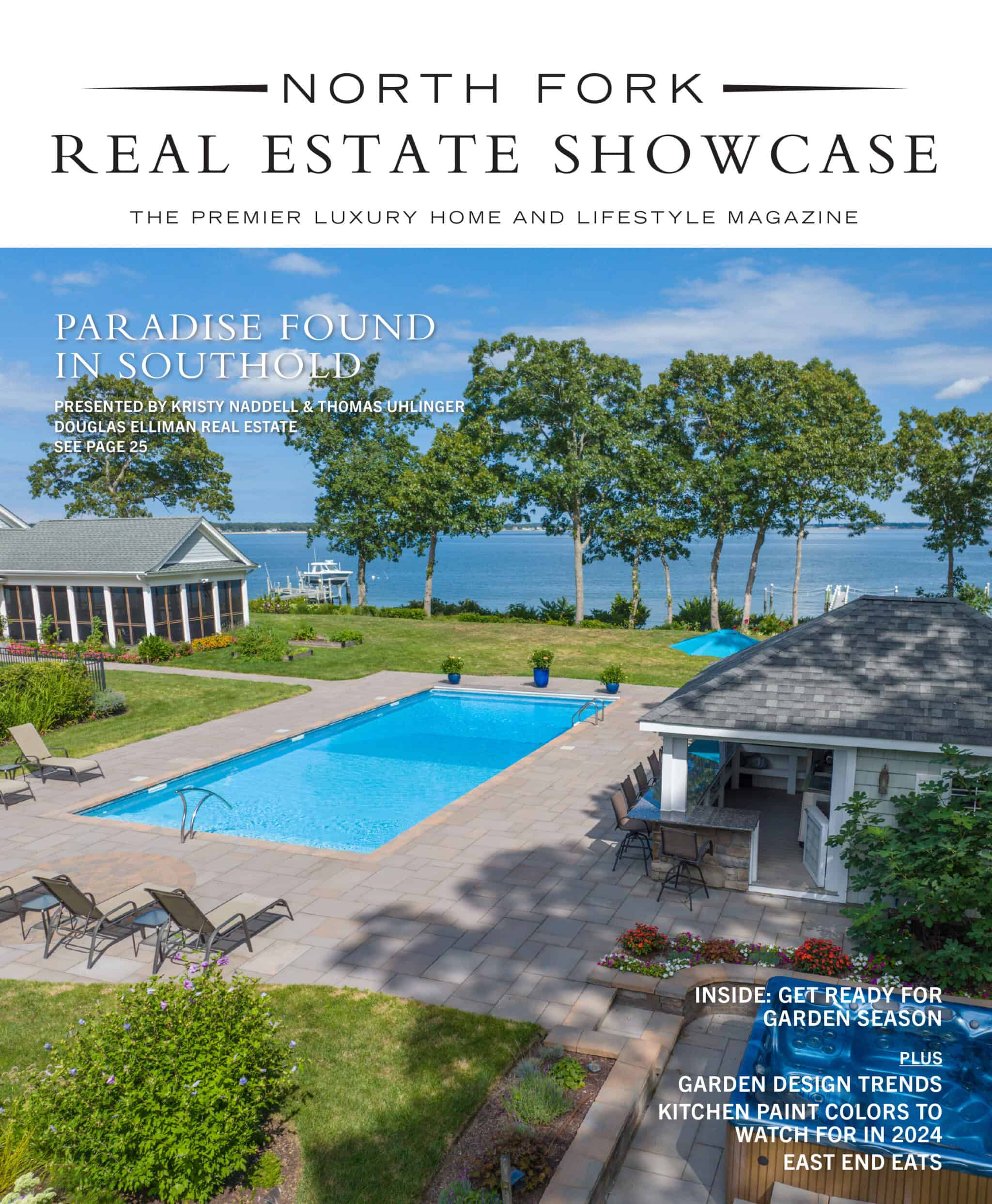Unless you’re a boater or an old timer or a birder, chances are you’ve never clapped eyes on Conkling Point. Shaped like a a curved arm, this natural treasure consists of a protected bay, tidal wetlands, and a narrow sand island. A place of ecological richness, It’s one of the few nesting grounds for piping plovers and least terns on the North Fork as well as an important habitat for wild life. Clams and fish thrive in its waters.
Susan Mulholland’s father, Frank Edwin Horn, was one of the area’s first developers, and the builder of the house that she has put on the market for $935,000. On the half-acre parcel is a two-story, 1800-square-foot cottage that sits on a rise. But the real attraction is the spectacular wetlands setting, a swath of green that goes straight down to the creek and has broad views across the inlet.
Disenchanted with city life, Horn, a mechanical engineer from Brooklyn with a strong entrepreneurial streak, decided to go into real estate in the nineteen-forties Having lost everything during the Great Depression, he wasn’t one to act on impulse, but in 1946, emboldened by a successful stint managing the Braden Copper Company, in Chile, and with the blessing of his wife, Beatrice, he bought up all the land on Conkling Point–32 untouched acres of beach, creek, marshes, and buildable land covered with huckleberries and brambles–for $20,000. Starting in 1947 and through the early nineteen-sixties, Horn, who died in 1966 at the age of 72, constructed and rented out cottages, creating a small summer colony that his daughter remembers with clarity.
Standing on her side porch where geese come to visit, she can tell you about the time that a certain elderly neighbor dragged wrecked autos into the inlet in a novel attempt to mend a gap in the inlet, which had been breached by a bad storm after a sand bar had shifted. She can tell you about her family’s first house on the Point, where a shower curtain served as a bathroom door, and the noisy tourists her dad drove off the beach for fear they would disturb the sea birds. (“He was known as the man-who-chased-everybody-off the beach,” she said.) Her recollections are peppered with the surnames of families who lived there decades ago and some of whose descendants are still there. Sages. Newsomes. Carluccis. Baldwins.
“This precious enclave really is the land that time forgot,” says listing broker Jill Dunbar of Daniel Gale Sotheby’s International Realty. “When you look at it, you’re seeing it as always was and probably always will be.”
Buying a wetlands property isn’t for everyone. To protect the fragile eco-sytem of this precious resource, there are a dizzying number of restrictions on building and development. (Mansion-fanciers take note: Susan Mulholland’s cottage must retain its present footprint.) But for many buyers–those who privilege natural beauty over architectural sprawl–the knowledge that their land is protected enhances the property’s true value. As Dunbar notes, “At a time when virtually all of the North Fork’s waterfront land has been developed, this hidden waterfront colony reminder about why the area is so special.”







